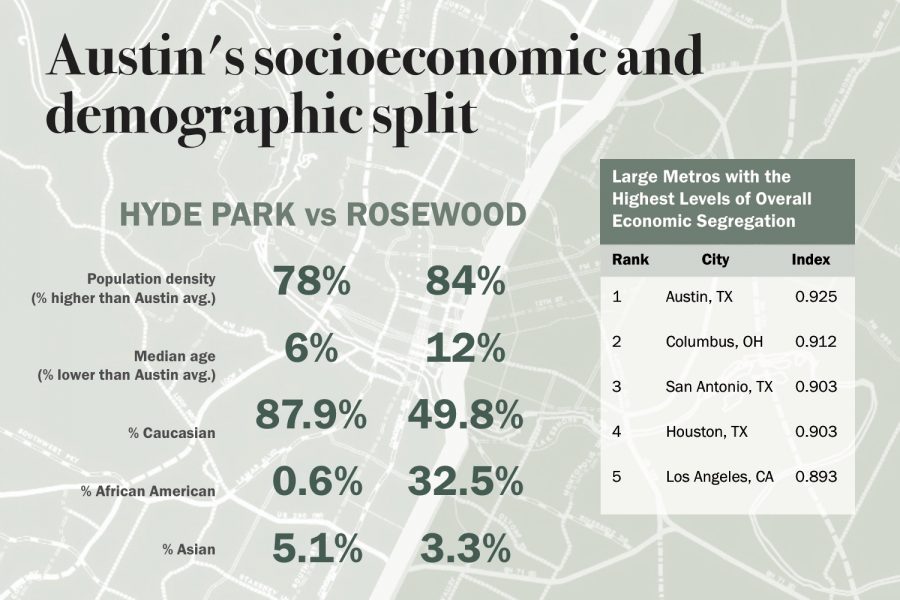Last Saturday, hundreds of Austinites gathered at City Hall to rally against white supremacy, and just two days later, UT removed three controversial Confederate statues from the Main Mall.
But overlooked amid the national controversy surrounding white nationalism and the statues was a passing remark by Mayor Steve Adler, pointing to the inequality ingrained in Austin.
“We have an interstate highway that was built to divide us as a city,” Adler said at the rally. “We remain today as the most geographically segregated city in the country.”
Here’s a brief history lesson: Throughout the twentieth century, Austin was built from the ground up to insulate whiter, wealthier communities from people of color. UT lecturer and urban geographer Eliot Tretter makes the case in his report, Austin Restricted.
Under a 1928 city plan, planners located “separate but equal” services for African Americans exclusively in East Austin neighborhoods designated solely for blacks.
Private real estate acted in concert with government policy — neighborhoods like Hyde Park featured restrictive covenants that legally barred people of color from buying or renting homes (“Hyde Park is exclusively for white people.”) The clauses remain in the deeds of many properties today, even if no court would ever enforce them.
Jim Crow is no longer the law of the land, but deed restrictions on the minimum lot size, minimum square footage and number of occupants continue to exclude minorities by driving up the prices of homes. As of the 2010 census, African American and Hispanic residents are still overwhelmingly concentrated in East Austin just beyond Interstate 35.
To undo decades of housing segregation, Tretter suggests modifying the state statutes that enable those deed restrictions to take effect. He recognizes that’s “seemingly impossible in the present political climate” — to put it mildly.
Returning to to Adler’s comment, building Interstate 35 didn’t just put up a big gray wall between white and black. It also put the nail in the coffin for Austin’s dysfunctional transportation system, which is not just gridlocked, but also inequitable.
Austin prides itself on being unique and different, but outside of a few charming downtown neighborhoods, it’s no different than your average auto-centric Texas suburbia. Cars are king in the world of parking lots, strip malls and freeways, to the detriment of other modes like walking, cycling, and public transit. And when a city puts all its eggs in a basket with four wheels and an engine, minorities suffer.
Controlling for other factors, research by urban geographer Chad Frederick shows that African American households make 15 percent more income in cities that offer safer, healthier, and more affordable alternatives to driving. Frederick suggests this is because minority households have access to more jobs, so members can make more — and employers are pressured to pay more.
Austin streets are becoming more equitable, but slowly. Last year’s mobility bond allocated $37.5 million for sidewalk construction, but the amount pales in comparison to the nearly $1 billion the 2009 master plan called for. Bicycle infrastructure continues to open, even if it is often not very safe or not very useful.
Celebrate the removal of white supremacist symbols from campus. But for the men and women Adler spoke of isolated in Austin’s sinisterly segregated neighborhoods, the shouts of “less talk, more action” go unanswered.
Young is a computer science senior from Bakersfield, California. He is a senior columnist. Follow him on Twitter @OldRyanYoung.





















